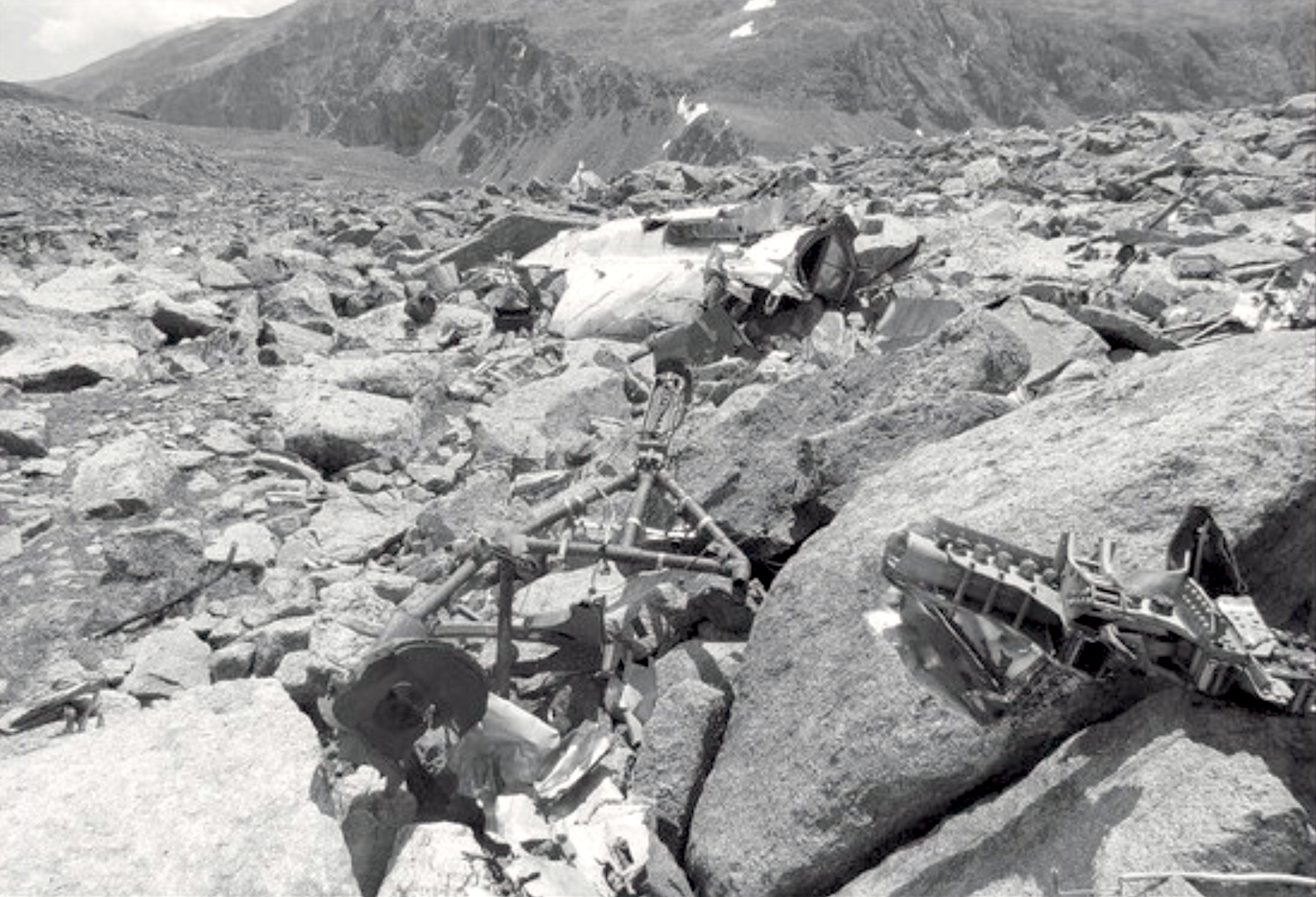Beyond the wreckage — Buffalo author publishes book on Bomber Mountain crash

The wreckage of a World War II bound B-17 still sits on Bomber Mountain in the Bighorn National Forest. Sylvia Bruner visited the site in 2014 and took this photo. Bruner recently authored a book about the crash and the 10-person crew who died onboard. Photo courtesy of Sylvia Bruner.
BUFFALO — Hiking to the site of the 1943 military plane crash on what is now known as Bomber Mountain in 2014, Sylvia Bruner was exhausted. At an elevation of more than 12,800 feet, she experienced altitude sickness.
She was also deeply moved. After researching the crash of the B-17 bound for World War II and the short lives of the 10 crew members onboard who were killed, sitting among the still intact wreckage was impactful.
“People are thinking of it as plane wreckage, but they’re not really thinking of it as the humans who perished,” Bruner said in an interview. “When you know more of that history and their stories, it matters in a different way to you.”
As an employee of the Jim Gatchell Memorial Museum, Bruner started researching the crash to build an exhibit in 2005. Talking with both locals and out-of-town visitors who were interested in the historical event – including distant relatives of the 20-somethings who died in the crash – she eventually decided to write a book.
Bruner, now the museum’s director, has worked on it in her spare time for several years, and in the past year she dedicated herself to finishing “The Wyoming Bomber Crash of 1943.”
Otherwise, information on the crash is limited, aside from a book published in 1990 by Scott Madsen of Buffalo. Relative to other tragedies of World War II, the Bomber Mountain crash is a small one, Bruner said, but it is central to local history of the war.
A B-17 carrying 10 crew members overseas to participate in World War II went missing over Wyoming the night of June 28, 1943. Two years later, locals found the wreckage in the Bighorn Mountains. It’s unknown, at this point, why the plane flew over the Bighorns in the first place.
At first, Bruner said, she questioned whether she, as someone who is not a veteran or a pilot, should be the person to write the book. What has kept Bruner motivated to complete the project, she said, was the connection she felt to the crew members.
“When I first started researching the topic, I was close to their age,” she said. “Now, I’m old enough I could probably be their mom. It’s changed the connection that I feel; the older I get, the more I realize how young they were. Now that I also have boys, picturing them in that position just breaks my heart. It needs to be remembered. Everybody deserves the opportunity to be remembered.”
Because the crew members were between the ages of 21 and 25, their military files were sparse, Bruner said. Some of them were unmarried and did not have any siblings, and she was unable to find any living relatives. Others had family members whom she was able to track down on Ancestry.com, some of whom she even met at the museum when they passed through town. The communications resulted in photos and information, and, importantly to Bruner, permission to tell this story.
“I know that, legally, you don’t have to have that, but I also put myself in the shoes of, how would I feel if I was reading a book and realized it was my great-grandfather?” she said. “And I wanted to run information past somebody to fact check as much as possible.”
In addition to contacting the crew members’ families, Bruner also put in a lot of hours of archival research.
She was delighted to find the diary of the U.S. Air Corps Captain Kenneth Hamm, a now deceased Rock Springs resident who, at the time, was stationed at what is now Ellsworth Air Force Base in western South Dakota near Rapid City and was the lead investigator of the crash. Hamm went on to become a notable lawyer and judge in the southwestern Wyoming community, and the local museum shared his writings on the crash with Bruner.
“It was kind of this holy grail, having someone’s perspective at the time during that recovery,” she said. “And not just anybody – he was a B-17 pilot. He knew what he was looking at.”
Through her research, Bruner discovered how quickly Buffalo and Sheridan community members mobilized to acknowledge and memorialize the crew.
Just a month after the wreckage was discovered and the crews’ bodies were recovered from the remote ridgeline, the Sheridan chapter of the American War Dads Auxiliary, an organization of veterans’ fathers, installed a bronze memorial plaque with crew members’ names at the shore of Florence Lake.
“None of these guys were from here, nobody locally knew them, but still, their memory was embraced,” Bruner said. “Everybody was feeling the effects of World War II, and a lot of people had lost loved ones. So, for them, it mattered that these guys who died had to be remembered, even if they weren’t locals.”
The Gatchell museum will host a book signing and discussion with Bruner from 9 a.m. to 4 p.m. on Tuesday, April 22.
This story was published on April 17, 2025.








